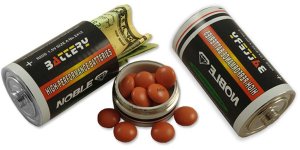Most people I met in prison weren't stupid but did something stupid that landed then there. A little mistake or random event can really fuck you.
But hell you don't even need to commit a crime so that should show you it's definitely not just stupid criminals, you can just be really unlucky. Being the wrong color, in the wrong place, at the wrong time, with the wrong people or fitting the right description. Guildford Four, Maguire seven, Birmingham six. Basically a bomb just went off, you're Irish, catholic, no alibi? Life sentence. From what I gather that's pretty much how it is being black in the USA. With different parameters obviously.
I know they say everyone in prison is innocent but the sarcasm is barely even warranted nowadays.
I'd happily release probably 8 out of 10 prisoners and have them as my fellow citizens. It's not smart people who don't go to prison it's evil, really fucked up people committing crimes far worse than any prisoner ever has. You can be smart and not want to be an evil cunt.
But you with your guns and dope you're just lucky. You get in some unforeseen situation and the whole thing is fucked and you're in with everyone else telling yourself how stupid you are and going over every small thing that landed you there.
But hell you don't even need to commit a crime so that should show you it's definitely not just stupid criminals, you can just be really unlucky. Being the wrong color, in the wrong place, at the wrong time, with the wrong people or fitting the right description. Guildford Four, Maguire seven, Birmingham six. Basically a bomb just went off, you're Irish, catholic, no alibi? Life sentence. From what I gather that's pretty much how it is being black in the USA. With different parameters obviously.
I know they say everyone in prison is innocent but the sarcasm is barely even warranted nowadays.
I'd happily release probably 8 out of 10 prisoners and have them as my fellow citizens. It's not smart people who don't go to prison it's evil, really fucked up people committing crimes far worse than any prisoner ever has. You can be smart and not want to be an evil cunt.
But you with your guns and dope you're just lucky. You get in some unforeseen situation and the whole thing is fucked and you're in with everyone else telling yourself how stupid you are and going over every small thing that landed you there.



